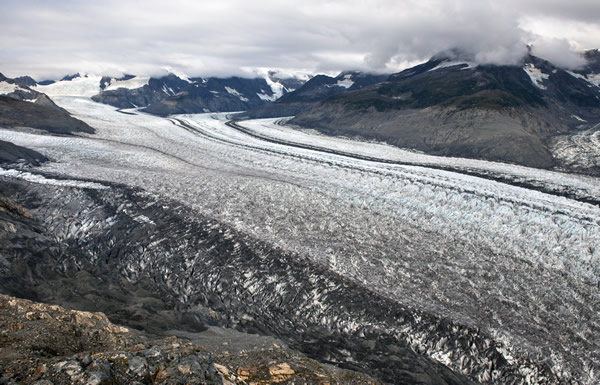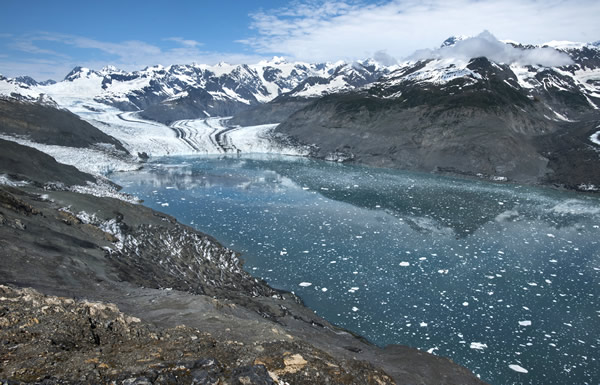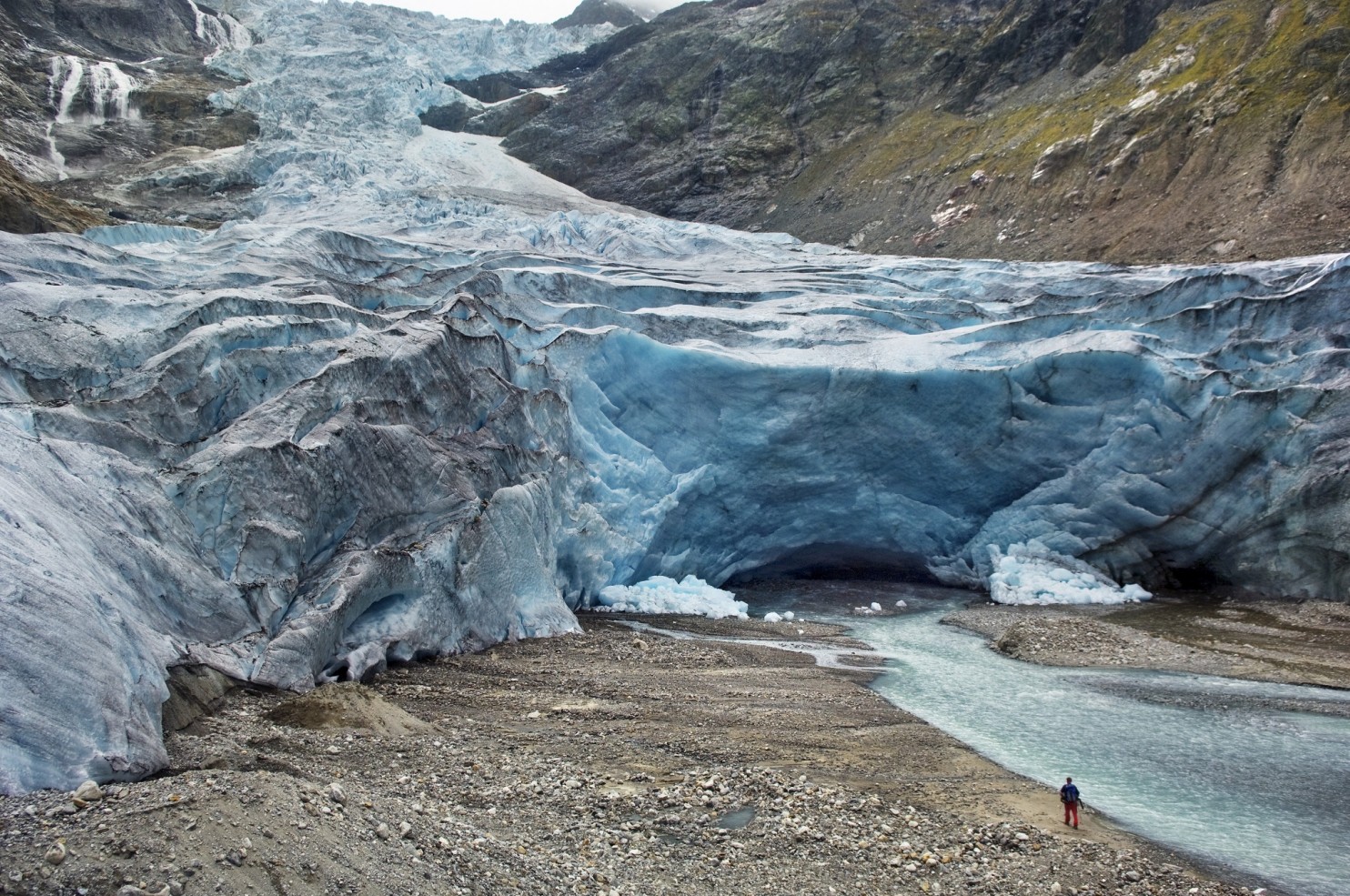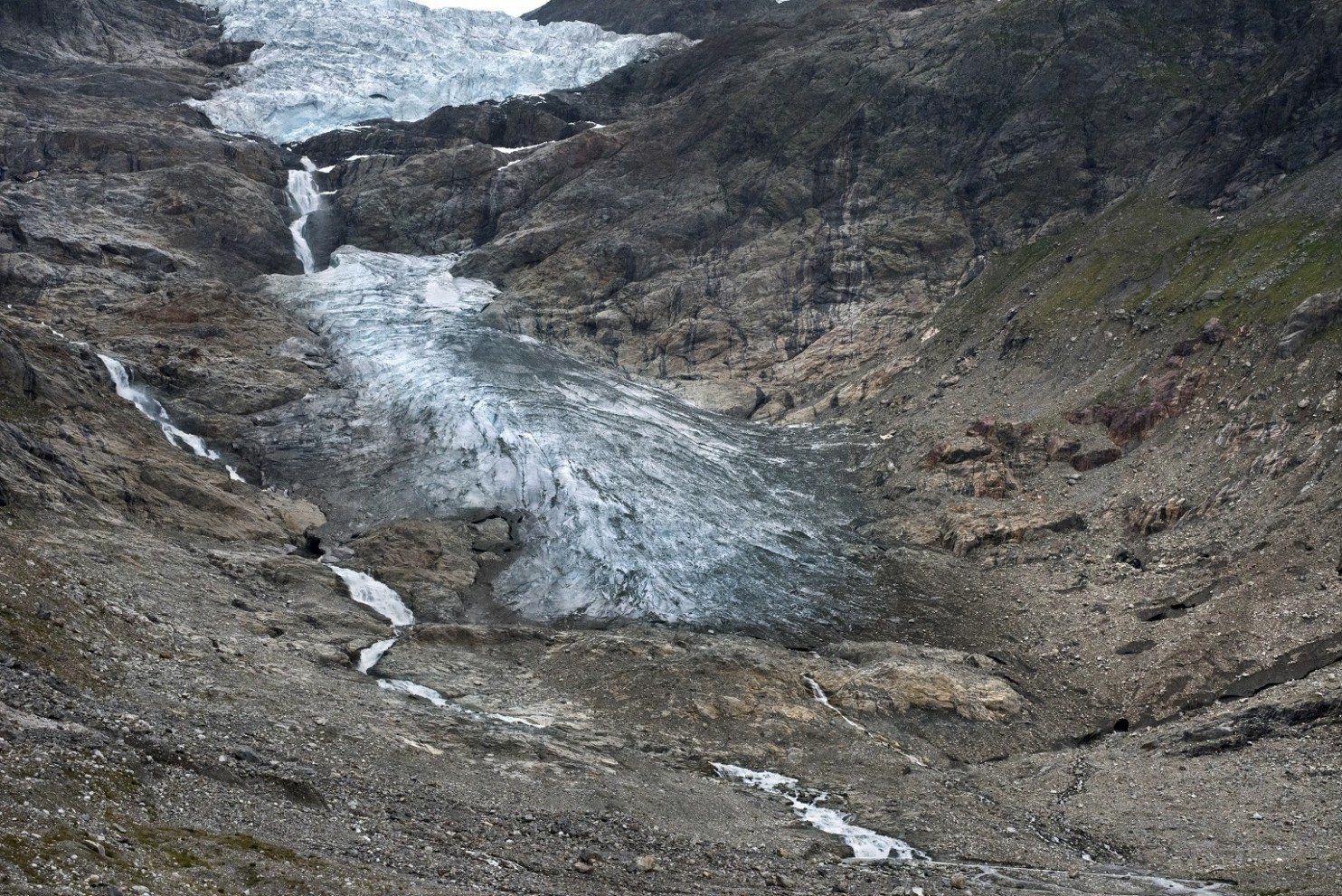These Photos Show Climate Change Is Already Having a Major Effect

By:
A series of new photos reveals the devastating effects climate change is having on glaciers around the world, the Washington Post reported.
The photos come from a paper published by the Geological Society of America last week, which reveal before and after photos of glaciers between 2006 and 2015. The picture below illustrates the changes in the Columbia Glacier in Alaska between 2009 and 2015.
 James Balog and the Extreme Ice Survey - geosociety.org
James Balog and the Extreme Ice Survey - geosociety.org
 James Balog and the Extreme Ice Survey - geosociety.org
James Balog and the Extreme Ice Survey - geosociety.org
“I do think that our most dominant sensory apparatus is our vision,” photographer James Balog, who documented the glaciers, told the Washington Post. “So when you can deliver an understanding of the reality of what’s going on through vision, rather than numbers or maps, that also has the unique ability to touch and influence people.”
Balog's work was featured in a 2012 documentary called "Chasing Ice," which followed the photographer as he documented the changing landscapes of remote areas around the globe.
Below are photos of the Trift Glacier in Switzerland taken in 2006 and 2015, respectively. The glacier has receded 3,700 feet in that time.
 James Balog and the Extreme Ice Survey - geosociety.org
James Balog and the Extreme Ice Survey - geosociety.org
 James Balog and the Extreme Ice Survey - geosociety.org
James Balog and the Extreme Ice Survey - geosociety.org
“It is likely that these recently deglaciated landscapes will not be re-occupied by ice during foreseeable human timeframes,” the paper states. “In other places, forests or other vegetation may rapidly colonize such landscapes. Photographic records, such as those included here, provide an outstanding avenue for education, because they display a record of ice that may never be seen again.”
As we've reported before, there are numerous examples of dramatically altered landscapes. Greenland, one of the coldest countries on the planet, saw record breaking heat in 2016. This was in keeping with a much larger pattern, as last year was the warmest on record. And 2017 has already seen its share of disturbing weather patterns, like the dearth of snow in Chicago in January or February, a first since the National Weather service began recording the city's weather in 1871.
These changes highlight some of the reasons environmental scientists are concerned with President Trump's recent actions that weaken efforts to stop climate change, such as his promise to slash the EPA's budget and his reversal on some of the key environmental protection policies of President Obama.
